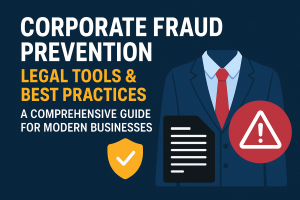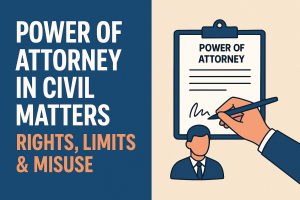With the rapid growth of cloud-based technology, Software as a Service (SaaS) has become the preferred model for software delivery. Whether you’re a service provider or a customer, having a well-drafted SaaS Agreement is crucial to ensure clarity, compliance, and protection of rights.
In this blog, we’ll dive deep into what a SaaS Agreement is, why it’s important, and the key clauses that must be included to make it legally sound.
What is a SaaS Agreement?
A SaaS Agreement is a contract between a SaaS provider and a customer, outlining the terms under which the software service will be provided, accessed, and used. Unlike traditional software licensing, SaaS does not involve the transfer of ownership — the customer is only granted a subscription-based or access-based right to use the software.
Purpose of a SaaS Agreement
• Define rights and responsibilities
• Protect intellectual property
• Limit liabilities
• Ensure data security and compliance
• Establish payment and renewal terms
Key Clauses in a SaaS Agreement
1. Definitions
Clear definitions of terms like “Service”, “User”, “Subscription Term”, “Data”, etc., to avoid ambiguity.
2. License Grant and Restrictions
• The agreement must specify the scope of use — whether it’s per user, per device, or enterprise-wide.
• Restrict reverse engineering, copying, or reselling.
3. Subscription Term and Renewal
• Define the initial term, renewal periods (auto-renewal or manual), and conditions for termination.
4. Pricing and Payment Terms
• Subscription fee structure: monthly, quarterly, or annual.
• Late payment penalties, taxes, and billing methods.
5. Service Level Agreement (SLA)
• Uptime guarantees (e.g., 99.9% availability).
• Support response time.
• Remedies in case of service outages.
6. Data Security and Privacy
• Compliance with data protection laws like GDPR, IT Act, 2000 (India), etc.
• Data encryption, backups, and breach notification obligations.
7. Intellectual Property Rights
• Provider retains ownership of software.
• Customer owns their own data.
• No transfer of IP unless explicitly agreed.
8. Confidentiality
• Non-disclosure of sensitive business or user information.
• Time-bound obligations even post-termination.
9. Indemnity and Liability
• Provider indemnifies customer against third-party IP claims (if applicable).
• Limitations of liability: typically capped at subscription fees paid in the last 12 months.
10. Termination
• Termination for cause (breach, non-payment) or convenience.
• Data return/destruction upon termination.
• Refunds, if any, in case of early exit.
11. Dispute Resolution & Governing Law
• Jurisdiction (e.g., courts of Bengaluru, India).
• Arbitration clause or mediation as a first step.
Special Clauses to Consider in Indian Context
• IT Act compliance for cybersecurity.
• GST implications for SaaS services.
• Data localization requirements for specific sectors (e.g., financial services, health).
Best Practices While Drafting a SaaS Agreement
• Avoid template-based one-size-fits-all agreements.
• Ensure negotiability — especially for enterprise clients.
• Include a data processing agreement (DPA) as an annexure, if handling sensitive user data.
• Get legal vetting for cross-border SaaS deals (export/import of services).
Conclusion
A well-drafted SaaS Agreement is not just a formality — it’s a legally binding instrument that defines the business relationship between provider and client. With rising reliance on digital tools, the importance of customised , enforceable, and clear SaaS contracts is higher than ever.
Whether you’re a startup founder launching your SaaS product or a business subscribing to one, it’s wise to consult a legal expert to tailor the agreement to your specific needs.



